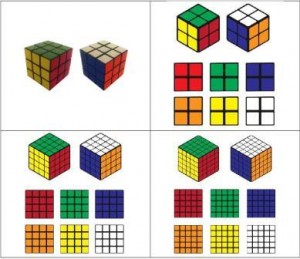In this Christmas season, games are popular in the shops and under the tree, but also spark fierce legal debates.
How to durably protect the games and prevent competitors from developing identical or similar games?
When launching a new game, manufacturers obviously think to file the game’s name as a trademark. The names of successful games (which can be considered as well-known) benefit from a broad protection. For example:
- PICTIONNARY is an obstacle to the registration of ACTIONNARY (1), and
- MONOPOLY is an obstacle to the use of TRIPOTOLY, considered as “an adaptation of the semi-figurative mark ‘MONOPOLY’ to refer to an erotic version of the eponymous game” (2).
The forms, such as the game board, cards, visual characters, parts and figures, if new and having individual character, may be registered as designs on or before launching the game. But even if registered and renewed, a design may only last 25 years, as opposed to a trademark that can be renewed as many times as the owner wishes.
For this very reason, as a matter of course game makers seek to protect the appearance of their games by filing trademarks, in order to enjoy unlimited monopoly in time (3).
But legal provisions prevent the registration of signs which consist exclusively of:
- The shape which results from the nature of the goods themselves; or
- The shape of goods which is necessary to obtain a technical result; or
- The shape which gives substantial value to the goods.
Such is often the case for games, since it is precisely for their shapes (at least for building games), their colours, their appearance, or their mechanisms that they are chosen.
That is why such trademarks as game cards, trays (4) or, after years of legal battles, the famous LEGO bricks, have been cancelled.
The example of the famous Rubik’s cube, a 3D puzzle cube-shaped, is fairly representative of the difficulty of protecting a game by trademark law.
Several European trademarks have been filed during the last decade.
In 2007, the following trademark has been filed under the description “colour mark per se”:
The mark was refused given the uncertainties relating to the nature of the mark (5) on the ground that it was not a colour mark per se, but a three-dimensional mark, or figurative mark, which corresponds to the external appearance of a particular object with a specific form, that is to say a cube covered in squares with a particular arrangement of colours. The overall description of the mark, ambiguous and contradictory, led the court to refuse the registration of the trademark.
Besides, several figurative marks were filed, along with a detailed description (6), the signs consisting of more or less complex games with 4, 9, 16 or 25 squares on each side.
Those registered trademarks have been brought before the OHIM Cancellation division. Invalidity procedures are pending.
Finally, a B&W mark was filed in 1996 and registered for three-dimensional puzzles.
On 2006, a competitor filed a request for a declaration of invalidity against this trademark for lack of graphical representation, lack of distinctiveness, and sign consisting on a functional shape, the natural shape of a 3D puzzle and a shape which gives substantial value to the goods.
This trademark has just been validated by the General Court (7), which approves the decisions of the Cancellation Division and of the Board of Appeal, arguing that:
- The essential characteristic of the sign consists of the grid structure which is a non-functional element;
- The graphic representations of the contested mark cannot allow to determine whether the shape involves any technical function: “It cannot be inferred with sufficient certainty from those representations that the cube in question is made up of moveable elements and even less that they are rotatable”;
- “The applicant has not established to the requisite legal standard that the shape in question constitutes the norm in the sector of three-dimensional puzzles”;
- The contested mark does not, without prior knowledge on the part of the consumer, resemble or hint at a three-dimensional puzzle.
If the mark is validated by the General Court, its scope should nonetheless be very limited: “The contested mark may not be relied on by its proprietor in order to prohibit third parties from marketing three-dimensional puzzles that have a rotating capability. As is apparent from the foregoing reasoning, the registration of that mark does not have the effect of protecting a rotating capability which the shape in question allegedly possesses, but solely the shape of a cube the surfaces of which bear a grid structure, which gives it the appearance of a ‘black cage’. That mark cannot in particular prevent third parties from marketing three-dimensional puzzles that have a shape different from that of a cube or that have the shape of a cube but whose surfaces do not consist of a grid structure similar to that on the contested mark or any other similar motif, and prevent those puzzles from incorporating or not incorporating a rotating capability”.
Furthermore, proving the genuine use of this trademark could also be an issue since it was filed in black and white while the very principle of Rubik’s cube requires faces of 6 different colors and regarding the change of practice of OHIM and other patent and trademark offices concerning the use of trademarks in black and white (8).
When offices change the rules during the game…
© [INSCRIPTA]
(1) Opposition decision of the French PTO (INPI), Opposition division, case OPP 11-1901 / DDL, 04 November 2011, PICTIONNARY v. ACTIONNARY.
(2) Court of appeals of Paris, 12 November 2010, MONOPOLY v. TRIPOTOLY.
(3)See our previous article about 3D trademarks.
(4) Court of appeals of Paris, 7 March 2007, HASBRO INC and HASBRO FRANCE v. S.A. PACIFIC PROMOTION TAHITI and S.A.R.L. PARIS PROMOTION SOUVENIRS.
(5) General Court of the E.U., 14 June 2012, case T‑293/10, SEVEN TOWNS LTD v. OHIM.
(6) Six surfaces being geometrically arranged in three pairs of parallel surfaces, with each pair being arranged perpendicularly to the other two pairs characterized by (i) any two adjacent surfaces having different colours which are red (PMS 200C), green (PMS 347C), blue (PMS 293C), orange (PMS 021C), yellow (PMS 012C) and white and (ii) each such surface having a grid structure formed by black borders dividing the surface into twenty-five equal segments; the graphic representation of the mark shows two three-dimensional views of the mark from a side angle and a front view of each of the six sides. Colours: Red (PMS 200C), green (PMS 347), blue (PMS 293C), orange (PMS 021C), yellow (PMS 012C) and white.
(7) General Court of the E.U., 25 November 2014, case T‑450/09, SIMBA TOYS GMBH & CO. KG v. OHIM.
(8) In a forthcoming article.



